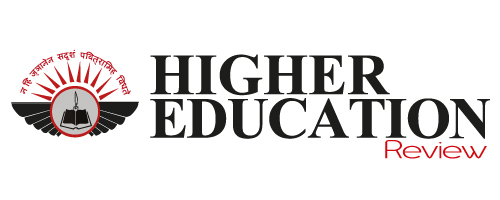Unveiling the Future of Strategic Recruitment to Drive Organizational Growth
 Sanjay Kumar, SVP & Group CHRO, Apar Industries in an interaction with Higher Education Review magazine shared his views on how organizations can use data to refine their recruitment strategies and improve hiring outcomes, how companies can leverage strategic recruitment to build sustainable talent pipelines that support long-term growth and more. Sanjay Kumar is a seasoned and passionate HR professional with extensive experience spanning IT, ITeS, Telecom, Financial Services, and Manufacturing sectors.
Sanjay Kumar, SVP & Group CHRO, Apar Industries in an interaction with Higher Education Review magazine shared his views on how organizations can use data to refine their recruitment strategies and improve hiring outcomes, how companies can leverage strategic recruitment to build sustainable talent pipelines that support long-term growth and more. Sanjay Kumar is a seasoned and passionate HR professional with extensive experience spanning IT, ITeS, Telecom, Financial Services, and Manufacturing sectors.
- How factors such as turnaround time, quality of hire and candidate experience are important for organizations to refine their recruitment strategies and improve hiring outcomes.
- How talent pool remains crucial, specifically during scaling down and how it is crucial to ensure that critical talent is retained and motivated, as this directly impacts the outcome of the business.
- How continuous learning, work-life balance as well as structured career development are vital to help Gen Z workforce
In an era of data, decisions should be driven by insights. How can organizations use data to refine their recruitment strategies and improve hiring outcomes?
In today’s data-driven era, decisions should be guided by insights. Organizations must refine their strategies as well as enhance recruiting outcomes by leveraging data effectively. A key component is having a clear recruiting hiring matrix, which minimizes subjectivity and enhances rationality in the process.
The principal metric commonly used is the turnaround time, though while helpful it is insufficient. The second crucial metric is the quality of hire, which involves confirming whether a candidate has been hired, if performance pay has been disbursed and whether the candidate earned the full amount. Also, promotion data plays a significant role in evaluating hiring effectiveness.
While organizations mainly focus on turnaround time, quality of hire is equally important. For executive search firms and placement agencies, metrics such as CV-to-offer ratio and offer-to-joining ratio are essential, particularly for senior roles.
Furthermore, companies should regularly experiment with sourcing channels and adopt AI tools for streamlining the process. Video interviews, for instance, can accelerate the hiring process, particularly for routine tasks. This protects the time of recruiters and senior leaders, ensuring interactions are only with the most suitable candidates.
Candidate experience is another critical factor. Monitoring feedback on platforms such as Glassdoor, understanding what candidates say regarding their experience, and ensuring timely communication are vital for enhancing the hiring process.
Finally, analyzing exit interview data is invaluable for identifying areas of improvement and action planning. Recruitment Management Systems (RMS) renders a wealth of data and it is essential for regularly analyzing and deriving insights to optimize the hiring process.
Talent pools are becoming essential to proactive recruitment. How can companies leverage strategic recruitment to build sustainable talent pipelines that support long-term growth?
I have had the opportunity of working in organizations across various stages, including startups, consolidation phases, and scaling down periods. This experience has been priceless in molding my approach to talent management.
In all these scenarios, the talent pool remains crucial, specifically during scaling down. It's crucial to ensure that critical talent is retained and motivated, as this directly impacts the outcome of the business. Reflecting on my past experience, I can say that analyzing recruitment data is highly essential for managing the talent pool effectively
We have learned from past experiences and established a skill inventory which aligns with our business plan. This helps in identifying gaps which allows companies to either groom internal talent or recruit externally for filling these gaps.
Our standard process includes manpower budgeting, after which we identify talent gaps which need recruitment or internal development. Furthermore, we consistently map the industry for senior candidates and actively engage draw in with likely future talent, even, when no immediate vacancy exists. This approach is crucial for succession planning - both internal as well as external. For external succession, we focus mainly on new skills or competencies that are not yet available in-house. Internally, we also rely on assessment centers, hypo programs, as well as individual advancement plans (IDPs) for developing and nurturing talent.
How do you think the expectations of younger generations, such as Gen Z, will shape future recruitment strategies and the organizational culture?
While there might be skepticism regarding this generation being entitled or less hardworking, now is the right time to shift this perspective. Gen Z is as of now 25% of the labor force and will soon become the majority. Organizations should recognize the strengths they bring and understand their unique expectations that differ significantly from previous generations like Gen X, Gen Y and the Baby Boomers.
We conduct workshops for fostering better intergenerational understanding. Gen Z places a high value on purpose, flexibility, personal growth as well as career development. Organizations need to offer clear career paths, focus on mental health, and ensure inclusivity. Gen Z, particularly in metropolitan cities with nuclear families, may lack personal support systems that would affect their well-being. It's critical for HRs to address these challenges such as providing counseling and support for emotional well-being.
Furthermore, continuous learning, work-life balance as well as structured career development are vital to help Gen Z thrive. If these factors are in place, they would feel more engaged and comfortable as well.
Since Gen Z is digitally native, organizations should leverage technology in order to keep them engaged effectively. Also, social media, gamified recruitment process powered by AI driven chatbots and employee stories can improve their experience. In short, organizations should evolve by rendering a supportive, transparent, as well as purpose-driven work environment which aligns with the values and expectations of Gen Zs in order to appeal to them.

